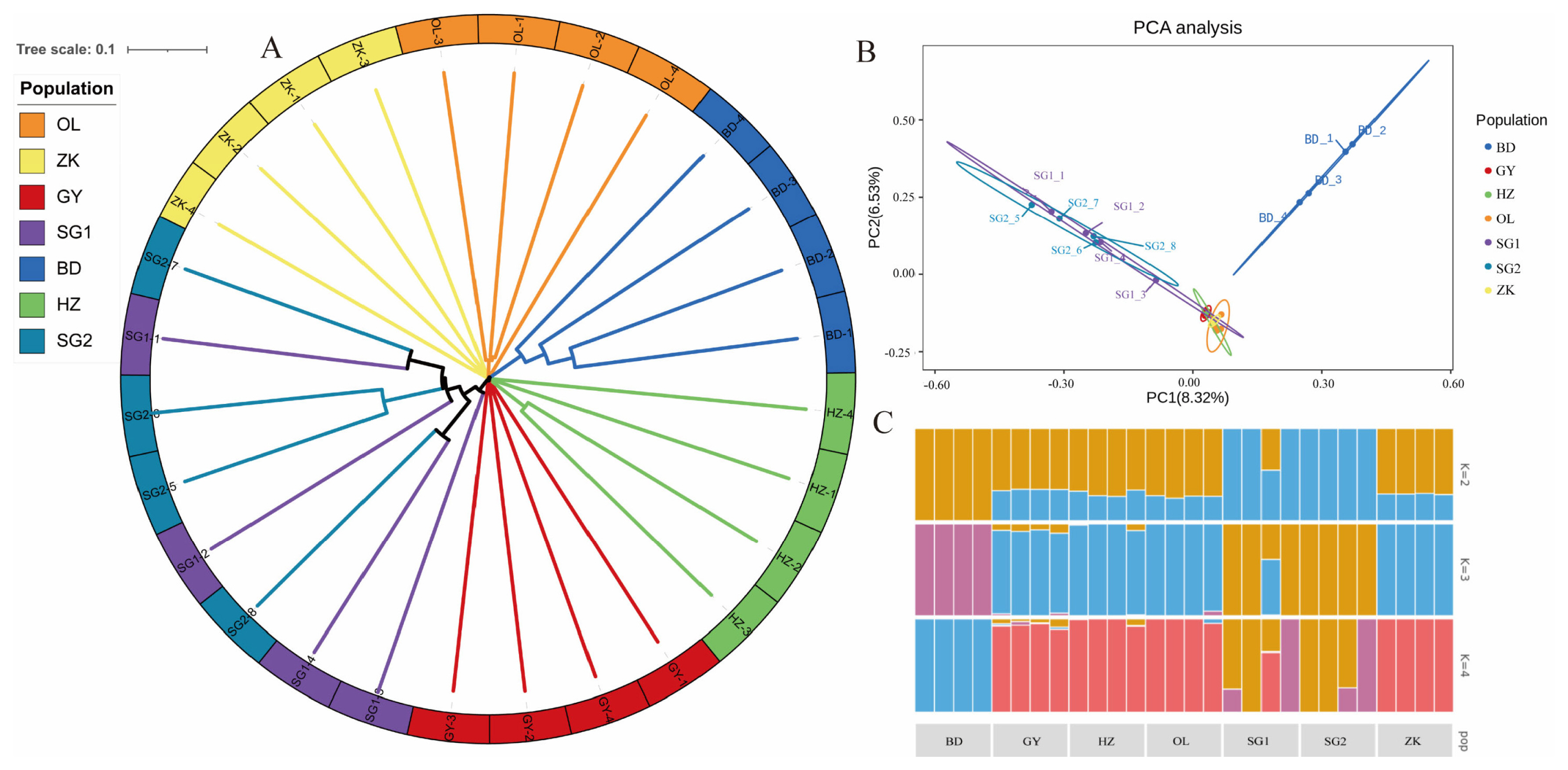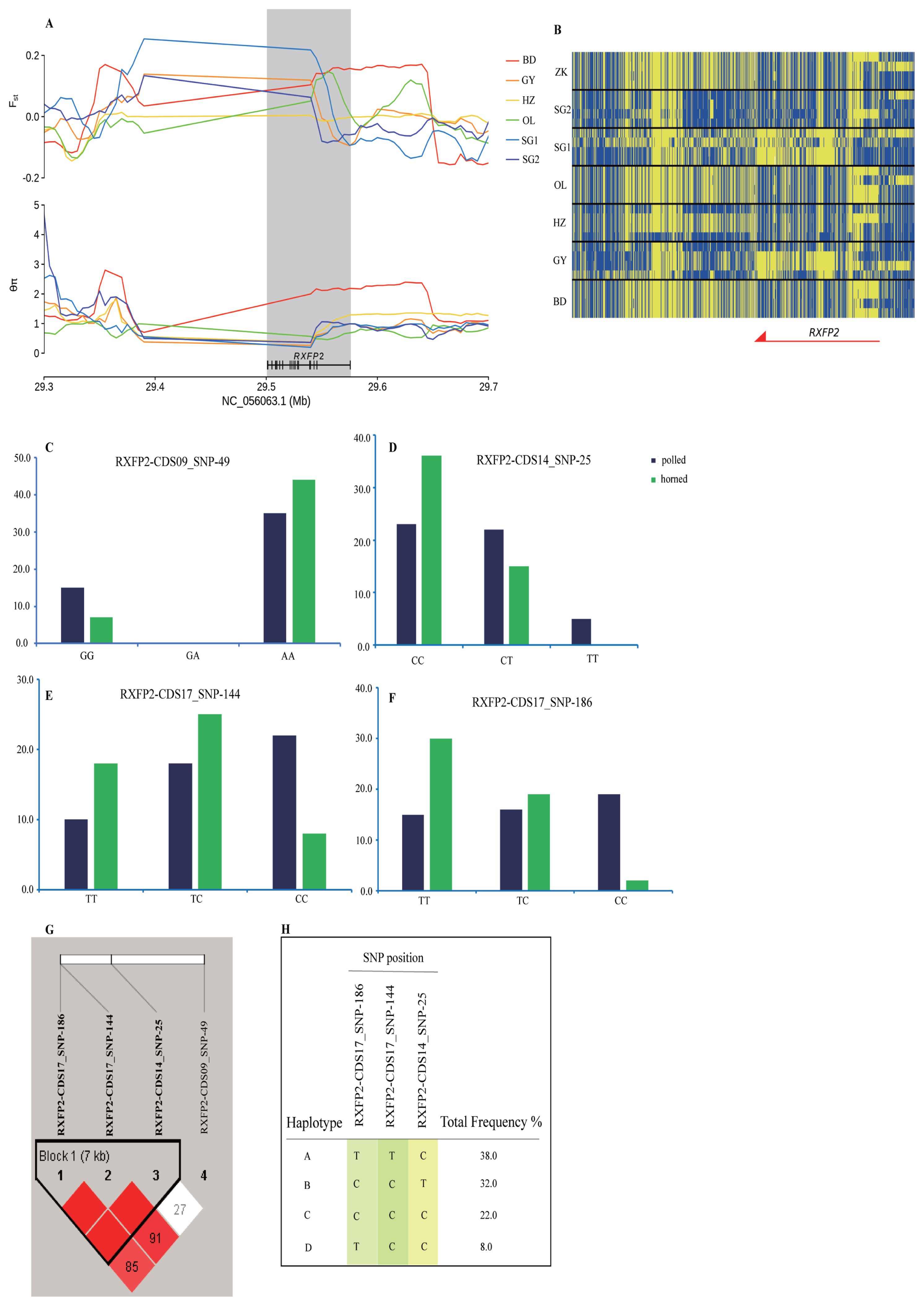1. Hu XJ, Yang J, Xie XL, et al. The genome landscape of Tibetan sheep reveals adaptive introgression from argali and the history of early human settlements on the Qinghai–Tibetan Plateau. Mol Biol Evol 2019; 36:283–303.
https://doi.org/10.1093/molbev/msy208


4. Du L, Li J, Ma N, et al. Animal genetic resources in china: sheep and goats. China National Commission of Animal Genetic Resources; 2011. p. 317–21.
5. Zeng XC, Chen HY, Hui WQ, Jia B, Du YC, Tian YZ. Genetic diversity measures of 8 local sheep breeds in northwest of China for genetic resource conservation. Asian-Australas J Anim Sci 2010; 23:1552–6.
https://doi.org/10.5713/ajas.2010.10132

7. Van der Auwera GA, Carneiro MO, Hartl C, et al. From FastQ data to high-confidence variant calls: the genome analysis toolkit best practices pipeline. Curr Protoc Bioinformatics 2013; 43:11.10.1–33.
https://doi.org/10.1002/0471250953.bi1110s43


12. Guindon S, Dufayard JF, Lefort V, et al. New algorithms and methods to estimate maximum-likelihood phylogenies: assessing the performance of PhyML 3.0. Systematic Biol 2010; 59:307–21.
https://doi.org/10.1093/sysbio/syq010

16. Huang DW, Sherman BT, Lempicki RA. Systematic and integrative analysis of large gene lists using DAVID bioinformatics resources. Nat Protoc 2009; 4:44–57.
https://doi.org/10.1038/nprot.2008.211


18. Gao X, Wang S, Wang YF, et al. Long read genome assemblies complemented by single cell RNA-sequencing reveal genetic and cellular mechanisms underlying the adaptive evolution of yak. Nat Commu 2022; 13:4887
https://doi.org/10.1038/s41467-022-32164-9

20. Guo S, Wu X, Pei J, et al. Genome-wide CNV analysis reveals variants associated with high-altitude adaptation and meat traits in Qaidam cattle. Electron J Biotechnol 2021; 54:8–16.
https://doi.org/10.1016/j.ejbt.2021.07.006

23. Xu SS, Li MH. Recent advances in understanding genetic variants associated with economically important traits in sheep (Ovis aries) revealed by high-throughput screening technologies. Front Agric Sci Eng 2017; 4:279–88.
https://doi.org/10.15302/J-FASE-2017151

25. Bernardi R, Guernah I, Jin D, et al. PML inhibits HIF-1α translation and neoangiogenesis through repression of mTOR. Nature 2006; 442:779–85.
https://doi.org/10.1038/nature05029


27. Thomas GV, Tran C, Mellinghoff IK, et al. Hypoxia-inducible factor determines sensitivity to inhibitors of mTOR in kidney cancer. Nat Med 2006; 12:122–7.
https://doi.org/10.1038/nm1337


33. Mohammadi H, Moradi MH, Khaltabadi Farahani AH. Genome-wide association study and pathway analysis for identifying the genes associated with coat color in Lori-Bakhtiari sheep breed. Iranian J Anim Sci 2022; 53:153–60.
https://doi.org/10.22059/ijas.2022.329848.653846

35. Saravanaperumal SA, Pallotti S, Pediconi D, Renieri C, La Terza A. Exon-1 skipping and intron-1 retaining by alternative splicing of the c-KIT gene encodes a novel splice variant in the skin of Merino sheep (Ovis aries). Mol Biol Rep 2021; 48:4987–94.
https://doi.org/10.1007/s11033-021-06486-8


38. Pöschl E, Schlotzer-Schrehardt U, Brachvogel B, Saito K, Ninomiya Y, Mayer U. Collagen IV is essential for basement membrane stability but dispensable for initiation of its assembly during early development. Development 2004; 131:1619–28.
https://doi.org/10.1242/dev.01037


42. Mastrangelo S, Ben Jemaa S, Sottile G, et al. Combined approaches to identify genomic regions involved in phenotypic differentiation between low divergent breeds: Application in Sardinian sheep populations. J Anim Breed Genet 2019; 136:526–34.
https://doi.org/10.1111/jbg.12422


43. Zhang Y, Wu K, Wang L, et al. Comparative study on seasonal hair follicle cycling by analysis of the transcriptomes from cashmere and milk goats. Genomics 2020; 112:332–45.
https://doi.org/10.1016/j.ygeno.2019.02.013


45. Kardos M, Luikart G, Bunch R, et al. Whole-genome resequencing uncovers molecular signatures of natural and sexual selection in wild bighorn sheep. Mol Ecol 2015; 24:5616–32.
https://doi.org/10.1111/mec.13415


46. Johnston SE, McEwan JC, Pickering NK, et al. Genome-wide association mapping identifies the genetic basis of discrete and quantitative variation in sexual weaponry in a wild sheep population. Mol Ecol 2011; 20:2555–66.
https://doi.org/10.1111/j.1365-294X.2011.05076.x








 PDF Links
PDF Links PubReader
PubReader ePub Link
ePub Link Full text via DOI
Full text via DOI Full text via PMC
Full text via PMC Download Citation
Download Citation
 Supplement1
Supplement1 Supplement2
Supplement2 Supplement3
Supplement3 Supplement4
Supplement4 Supplement5
Supplement5 Supplement6
Supplement6 Supplement7
Supplement7 Supplement8
Supplement8 Supplement9
Supplement9 Supplement10
Supplement10 Supplement11
Supplement11 Supplement12
Supplement12 Supplement13
Supplement13 Supplement14
Supplement14 Supplement15
Supplement15 Supplement16
Supplement16 Supplement17
Supplement17 Supplement18
Supplement18 Supplement19
Supplement19 Supplement20
Supplement20 Supplement21
Supplement21 Supplement22
Supplement22 Supplement23
Supplement23 Supplement24
Supplement24 Print
Print











